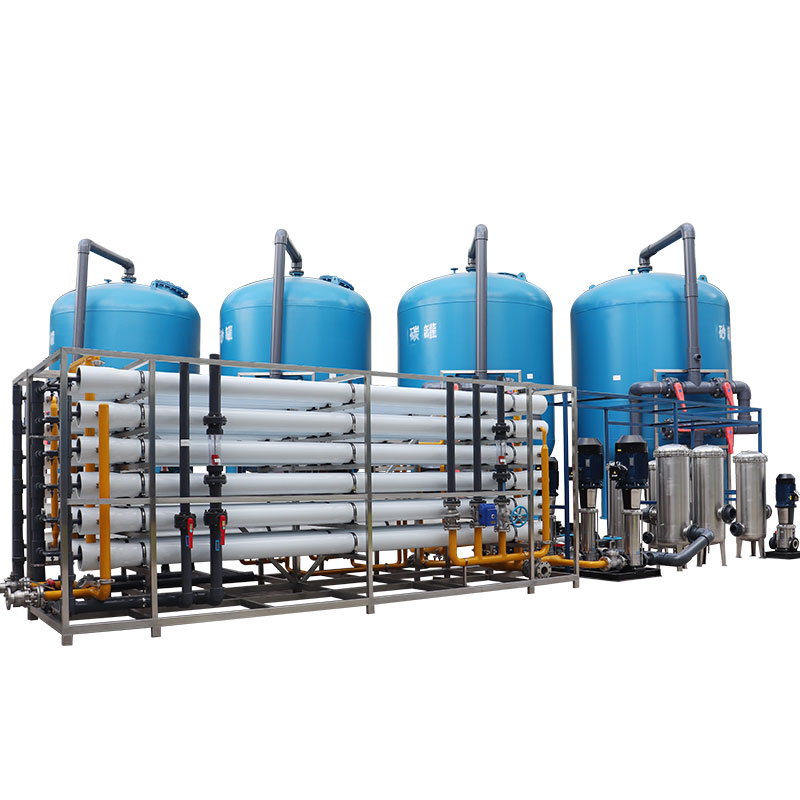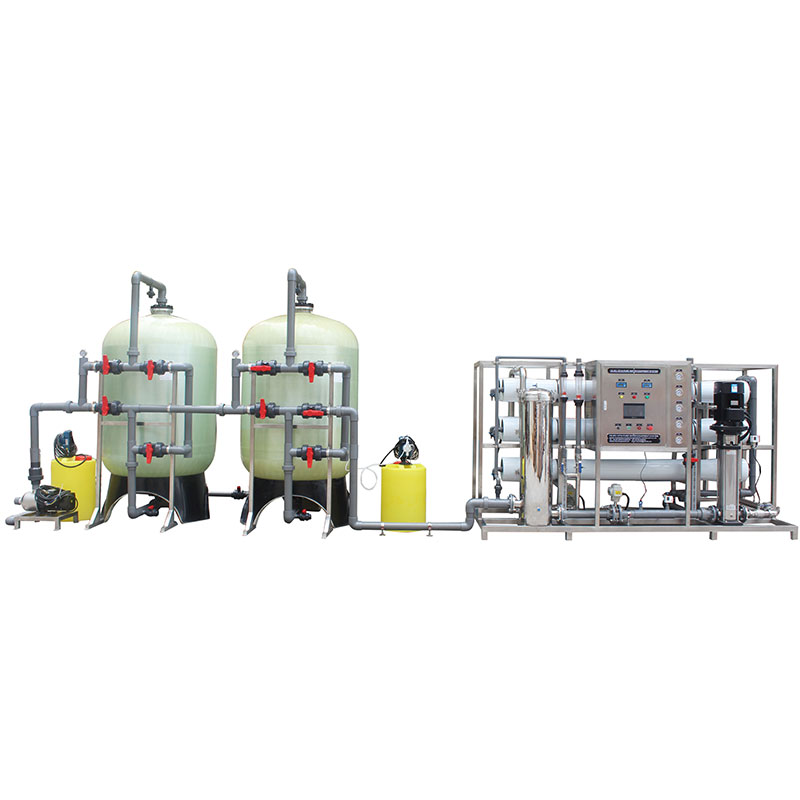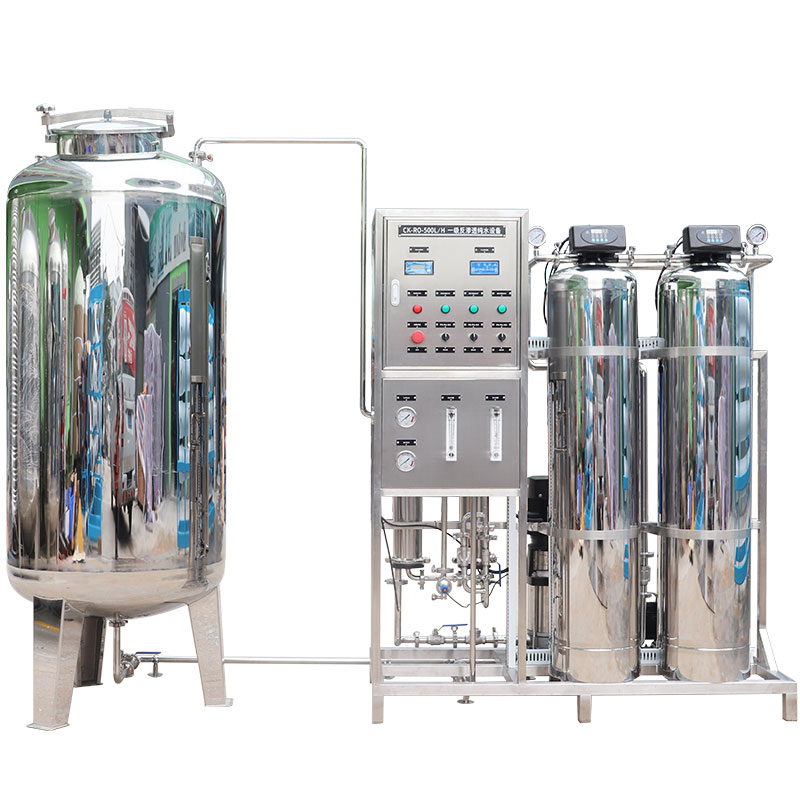What are the mechanical equipment used in water and wastewater treatment?
Water and wastewater treatment is an integral part of modern society. Its purpose is to purify drinking water, protect the environment, and ensure that industrial and domestic wastewater can be discharged in compliance with standards. In these treatment processes, various types of mechanical equipment play a vital role. Different mechanical equipment plays their respective roles in different stages of water treatment. From pretreatment to final water purification, each link relies on the support of efficient and reliable mechanical equipment.
This article will introduce the main mechanical equipment used in water and wastewater treatment in detail and explore their specific functions and roles.

Mechanical equipment in the pretreatment stage
In the pretreatment stage of water and wastewater treatment, the main purpose is to remove larger suspended matter and particulate matter in the water to provide stable water quality for subsequent treatment processes. This stage usually includes screening, sand settling, oil removal and other processes. The following are commonly used mechanical equipment.
Screen machine
The screen machine is an important equipment in the pretreatment stage. It is used to remove larger particles, floating objects and other impurities in wastewater that may cause damage to subsequent treatment equipment. The screen is usually installed at the water inlet. Through the screening effect of the metal bars, larger materials are intercepted in front of the screen and cleaned regularly. According to the opening size and processing capacity of the screen, the screen machine can be divided into coarse screen and fine screen. The former is mainly used to remove large impurities, while the latter is used to intercept smaller particles.
Rotary screen
The rotary screen is a dynamic screening equipment suitable for removing suspended particles and fibrous materials in water. It intercepts and discharges impurities in the water through the rotating screen, and the purified water flows into the subsequent treatment process through the screen. Rotary screens are widely used in the pretreatment stage of industrial wastewater treatment and urban sewage treatment plants, especially when treating wastewater containing a large amount of fibrous materials.
Grit chamber
The grit chamber is a device used to remove inorganic particles (such as sand and pebbles) from water. When the water flows through the grit chamber, the flow rate slows down, and the heavier particles settle to the bottom to form a grit layer. The design of the grit chamber usually requires uniform distribution of water flow and avoids turbulence to ensure grit efficiency. The settled sand is collected by the sand hopper and transported to the outside for treatment by a sand pump or mechanical scraper.

Mechanical equipment in the primary treatment stage
The main goal of the primary treatment stage is to further remove suspended solids, grease and larger organic matter in the water. This stage usually includes processes such as sedimentation, flotation, and filtration. The following are the key mechanical equipment used in this stage.
Primary sedimentation tank and scraper
The primary sedimentation tank is a commonly used equipment in wastewater treatment, mainly used to remove suspended solids in wastewater. Wastewater stays in the primary sedimentation tank for a certain period of time, and the heavier suspended matter settles to the bottom to form sludge, while the lighter matter floats on the water surface. The scraper is installed at the bottom of the primary sedimentation tank. Through rotation or reciprocating motion, the settled sludge is scraped into the sludge hopper and discharged regularly for subsequent treatment.
Flotation equipment
Flotation equipment is used to remove light suspended matter and grease that are difficult to settle in water. By introducing fine bubbles into the water, these suspended matter adhere to the surface of the bubbles and float to the water surface to form a foam layer. Flotation equipment usually includes components such as dissolved air device, flotation tank and scraper, and is widely used in industrial wastewater treatment, especially wastewater containing a large amount of oil and fat.
Sand filter
Sand filter is a classic filtering equipment used to further remove suspended particles and colloidal substances in water. When the water flows through the sand layer, the particles are trapped in the sand layer, and the purified water enters the subsequent treatment stage. Sand filters usually adopt a multi-layer media design to improve the filtration efficiency and treatment capacity, and are suitable for various water treatment application scenarios.
Mechanical equipment in the secondary treatment stage
The secondary treatment stage is the core link of wastewater treatment, mainly removing organic pollutants in water through processes such as biodegradation and redox. The following are commonly used mechanical equipment in the secondary treatment stage.
Aeration equipment
Aeration equipment is a key equipment in the activated sludge method and biofilm method treatment process. By injecting air or pure oxygen into the sewage, it provides the required oxygen for microorganisms to promote their decomposition of organic matter. Common aeration equipment includes types such as blower aeration, mechanical surface aeration and jet aeration. The efficiency of aeration equipment directly affects the effect and energy consumption of biological treatment, and is the core link in secondary treatment.
Secondary sedimentation tank and sludge scraper
The secondary sedimentation tank is similar to the primary sedimentation tank, but its main function is to separate the activated sludge after biological treatment and the treated clean water. The bottom of the secondary sedimentation tank is also equipped with a sludge scraper to collect the settled activated sludge and return it to the biological reactor or discharge it for sludge treatment. The design of the secondary sedimentation tank requires uniform water flow and high sedimentation efficiency to ensure the stability of the effluent water quality.
Rotary disc filter
The rotary disc filter is a high-efficiency mechanical filtration equipment, which is often used for deep filtration after secondary treatment. It consists of multiple parallel filter discs, and the sewage flows between the filter discs, and the suspended matter is trapped on the surface of the filter disc. The rotating motion of the rotary disc enables the filter disc to be automatically cleaned to maintain the continuity of the filtration effect. The equipment has the advantages of small footprint, large processing capacity, and easy maintenance, and is suitable for the secondary treatment end of various sewage treatment plants.

Mechanical equipment in the tertiary treatment stage
The tertiary treatment stage aims to further remove dissolved organic matter, nutrients (such as nitrogen and phosphorus), and other trace pollutants in water to meet higher discharge standards or achieve water resource reuse. Common mechanical equipment in this stage includes adsorption equipment, chemical precipitation equipment, and ion exchange equipment.
Activated carbon adsorption device
Activated carbon adsorption is a common method in tertiary treatment, mainly used to remove dissolved organic matter and trace pollutants in water. Activated carbon has a highly developed pore structure and surface area, which can adsorb organic pollutants in water. Activated carbon adsorption devices usually include an adsorption tower and a regeneration system. The adsorption saturated activated carbon can be treated by thermal regeneration or chemical regeneration methods to restore its adsorption capacity.
Chemical precipitation equipment
Chemical precipitation equipment is used to remove phosphates and other inorganic substances in water that are difficult to remove by biological treatment. By adding chemical reagents (such as aluminum salts, iron salts, etc.) to water, insoluble precipitates are formed, which settle in the sedimentation tank and are collected and processed by the scraper. Chemical precipitation equipment is widely used in the treatment of phosphorus-containing wastewater and hard water softening.
Ion exchange equipment
Ion exchange equipment is used to remove soluble ions in water, such as calcium, magnesium, nitrate, etc. It uses the characteristics of ion exchange resin to purify water by exchanging ions in water. Ion exchange equipment usually includes ion exchange columns and regeneration systems. The regeneration process restores the exchange capacity of the resin by adding brine or other regenerants. The equipment is widely used in water softening, desalination and deep wastewater treatment.

Sludge treatment and disposal equipment
Sludge treatment is an inevitable part of the water and wastewater treatment process. The purpose of sludge treatment is to reduce the volume of sludge, remove moisture, and make it suitable for final disposal or resource utilization through stabilization and harmless treatment. The following are common sludge treatment equipment.
Sludge thickener
Sludge thickener is used to reduce the water content of sludge, increase the solid content of sludge, and prepare for subsequent dehydration treatment. Common sludge thickening equipment includes gravity thickener, belt thickener and centrifugal thickener. By concentrating, the volume of sludge can be significantly reduced, reducing the energy consumption and cost of subsequent treatment.
Sludge dewatering machine
Sludge dewatering machine is used to further remove moisture from sludge and process the concentrated sludge into mud cake with low moisture content. Commonly used sludge dewatering equipment includes belt filter press, centrifugal dewatering machine and plate and frame filter press. The dehydrated mud cake is smaller in volume, which is convenient for transportation and final disposal.
Sludge incinerator
For sludge containing a large amount of harmful substances or difficult to stabilize, incineration is an effective disposal method. Sludge incinerators completely oxidize and decompose organic matter in sludge through high-temperature combustion, and the remaining incineration ash can be used for landfill or other purposes. The incineration process can also recover heat energy for power generation or heating, improving resource utilization efficiency.
In summary, every stage of water and wastewater treatment is inseparable from the support of various mechanical equipment. The screen machines, rotary screens and grit chambers in the pretreatment stage, the primary sedimentation tanks, flotation equipment and sand filters in the primary treatment stage, the aeration equipment, secondary sedimentation tanks and rotary filters in the secondary treatment stage, the activated carbon adsorption devices, chemical precipitation equipment and ion exchange equipment in the tertiary treatment stage, and the sludge thickeners, sludge dewaterers and sludge incinerators in the sludge treatment stage are all important tools to ensure the smooth progress of the water treatment process.




